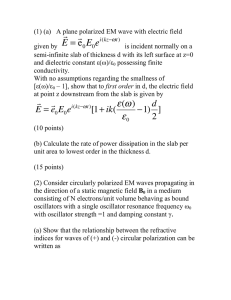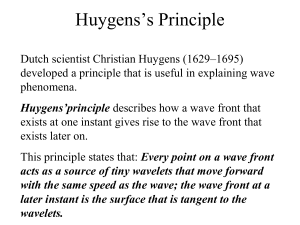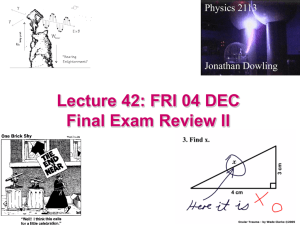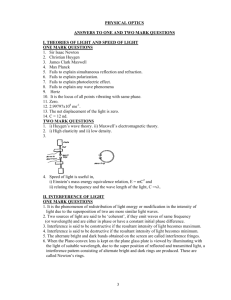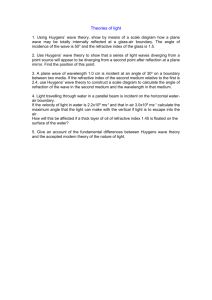Part V Polarization of Light
advertisement
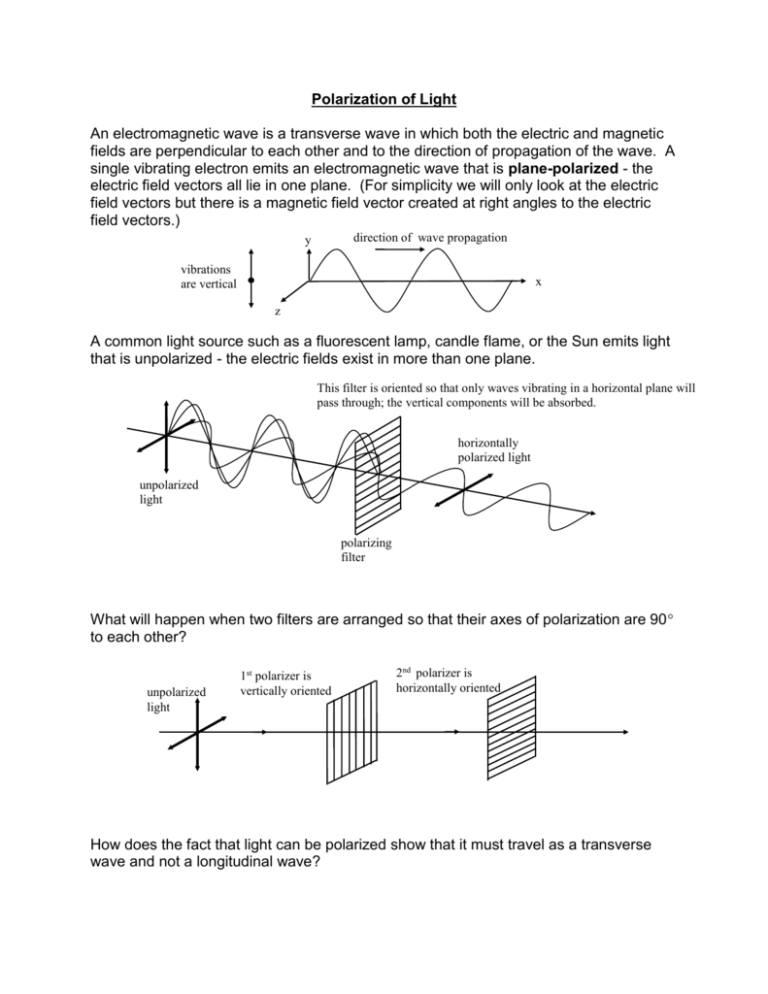
Polarization of Light An electromagnetic wave is a transverse wave in which both the electric and magnetic fields are perpendicular to each other and to the direction of propagation of the wave. A single vibrating electron emits an electromagnetic wave that is plane-polarized - the electric field vectors all lie in one plane. (For simplicity we will only look at the electric field vectors but there is a magnetic field vector created at right angles to the electric field vectors.) direction of wave propagation y vibrations are vertical x z A common light source such as a fluorescent lamp, candle flame, or the Sun emits light that is unpolarized - the electric fields exist in more than one plane. This filter is oriented so that only waves vibrating in a horizontal plane will pass through; the vertical components will be absorbed. horizontally polarized light unpolarized light polarizing filter What will happen when two filters are arranged so that their axes of polarization are 90 to each other? unpolarized light 1st polarizer is vertically oriented 2nd polarizer is horizontally oriented How does the fact that light can be polarized show that it must travel as a transverse wave and not a longitudinal wave? Polarized sunglasses absorb glare from a road, lake, or hood of a car. When light strikes a flat non-metallic surface, it is reflected so that it is polarized mainly in a plane parallel to the surface. How should the filters in the glasses be oriented to block glare? Light striking a horizontal surface will be reflected so that it is partially polarized in the horizontal plane.
